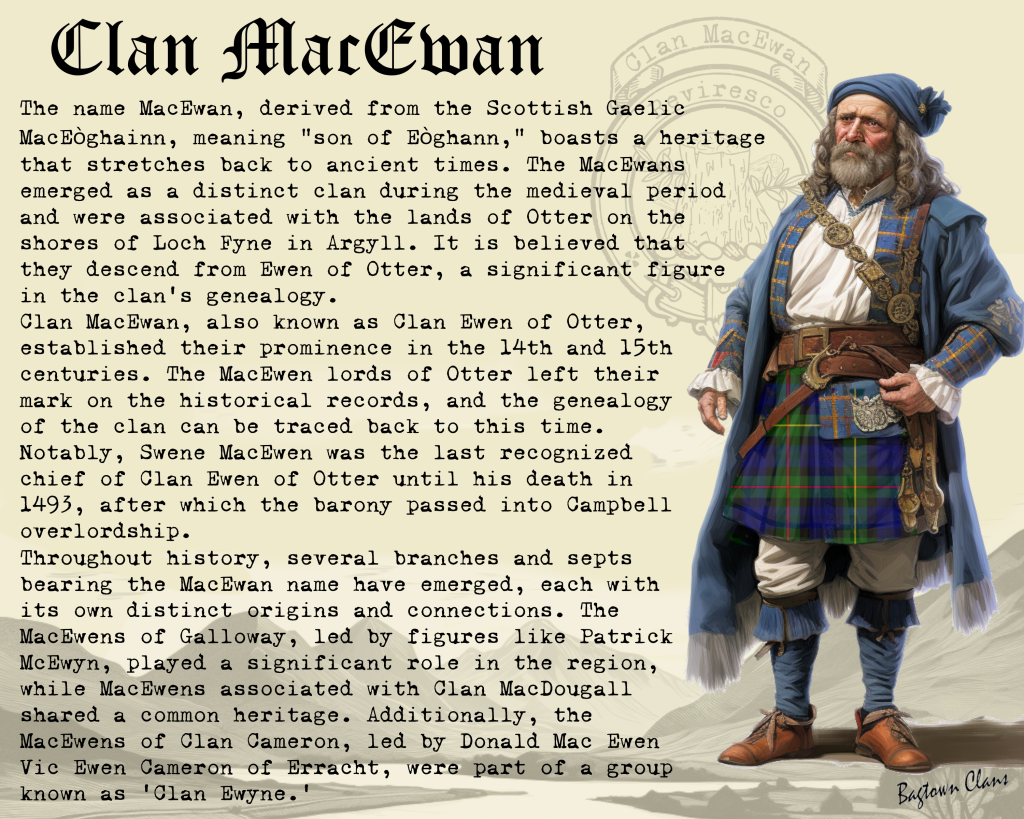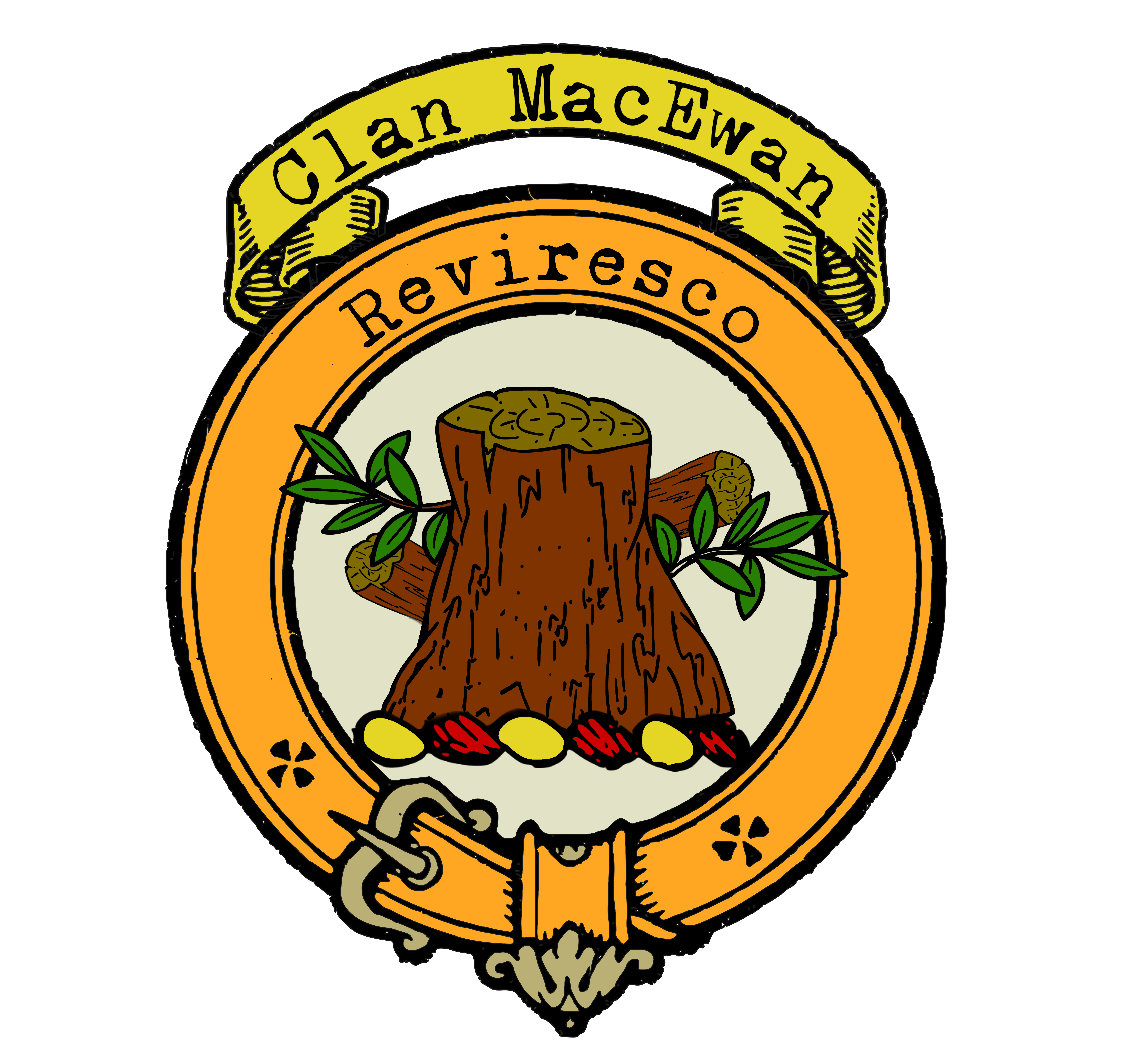Clan MacEwan Crest
|
|
CREST: The trunk of an oak tree sprouting Proper. MOTTO: Reviresco TRANSLATION: I grow strong again VARIATIONS: MacEwen. McEwen, McEwan, Ewen |
| The origins of Clan MacEwan can be traced back to ancient Gaelic roots. The name MacEwan is an anglicized form of the Scottish Gaelic “MacEòghainn,” which signifies “son of Eòghainn.” This proud lineage emerged during a time when clans played a vital role in Scottish society, forming the backbone of communities and safeguarding their ancestral lands.
One of the prominent branches of Clan MacEwan is Clan Ewen of Otter, renowned for their presence in the 14th and 15th centuries. The MacEwens of Otter held sway over their lands on the shores of Loch Fyne in Argyll. Their genealogy and historical significance are meticulously documented in MS 1467, currently preserved at the National Library of Scotland. Notably, Swene MacEwen was the last recognized chief of Clan Ewen of Otter until his passing in 1493. |
|
 |
|
| Purchase @ Redbubble Purchase @ Amazon.com Purchase @ Amazon.co.uk |
|
| Throughout history, the MacEwan name has spawned various branches and septs, each with its own distinct origins and regional affiliations. For instance, MacEwens in Galloway can be traced back to figures like Patrick McEwyn, who held the position of Provost of Wigtown in 1331. Additionally, MacEwens associated with Clan MacDougall and Clan Cameron have shared ancestral connections, further highlighting the clan’s far-reaching influence.
Clan MacEwan boasts a rich tradition of bardic poetry and scholarship. The MacEwan bardic family, considered one of the esteemed “families of the filidh,” served noble clans such as the MacDougalls of Lorne and the Campbells of Argyll. Their profound poetic compositions and learned contributions have etched their names in the annals of Scottish literary heritage, showcasing the MacEwans’ intellectual prowess and cultural significance. The passing of Swene MacEwen in 1493 marked a turning point in Clan MacEwan’s history. Without a recognized chief, the clan became armigerous, lacking formal recognition from the Lord Lyon King of Arms. However, recent efforts have emerged to revitalize the clan’s leadership structure. Sir John R.H. McEwen, 5th Baronet of Marchmont and Bardrochat, has been elected as a potential Chief, offering renewed hope for the clan’s restoration and unity. Symbols hold deep meaning within Scottish clans, serving as tangible representations of their collective identity. Clan MacEwan’s crest badge portrays a resilient oak stump sprouting new branches, symbolizing the clan’s ability to endure and regenerate even in the face of adversity. Accompanied by the Latin motto REVIRESCO, meaning “I grow green/verdant/strong again,” these symbols encapsulate the spirit and determination of Clan MacEwan. |
|
Citations:
|
|

